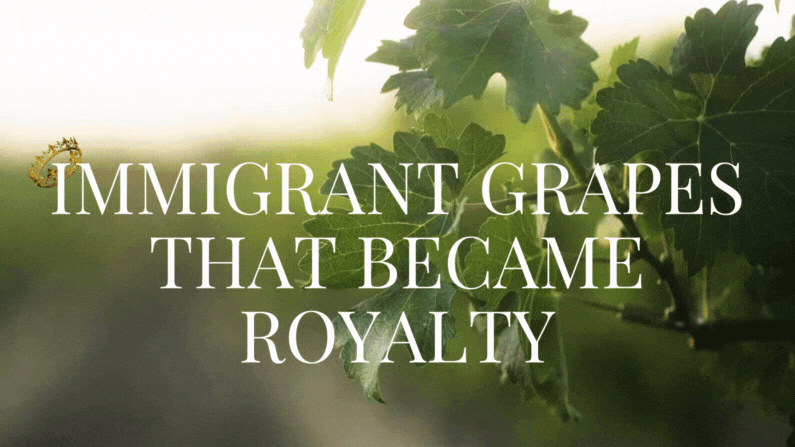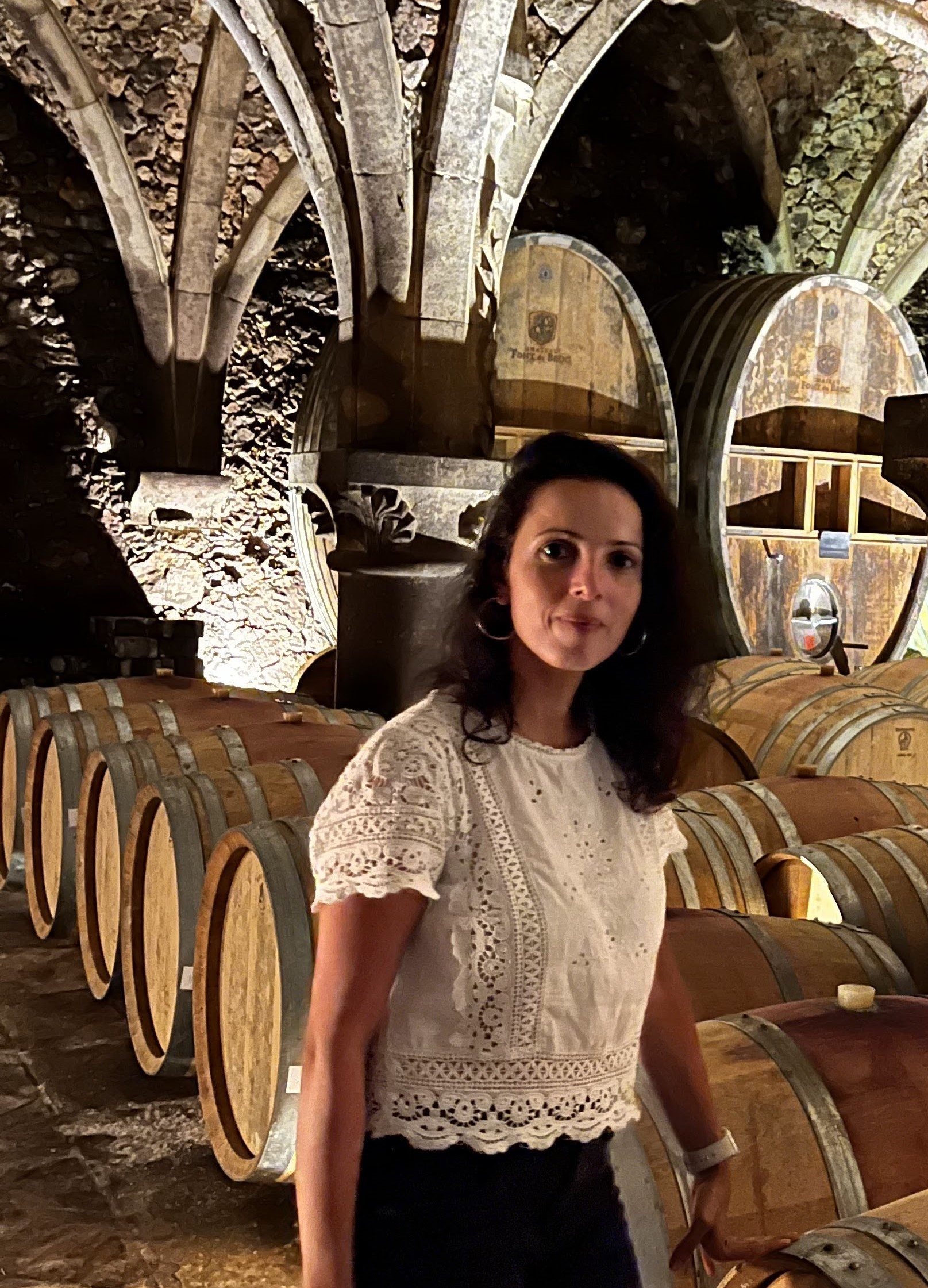

The Story of Malbec, Carménère, and Tannat
The Story of Malbec, Carménère, and Tannat
In the mid-19th century, Malbec, Carménère, and Tannat left their homeland in France heading to South America – future unknown. Just like most immigrants, armed only by their abilities and potential, these grapes have adapted and prospered in their new homes. Malbec is reaching new heights (literally and figuratively) in Argentina. Carménère became Chile’s signature grape and Tannat is Uruguay’s wine representative to the world!
Although there are more French indigenous varieties that thrived in other countries such as Syrah/Shiraz in Australia and Sauvignon Blanc in New Zealand, such grapes remained renowned in their home country as well.
Malbec, Tannat, and Carménère, on the other hand, have fallen out of favor in France and almost went extinct at some point! Carménère is currently a rarity there while Malbec and Tannat are only given attention in two sub-regions in the South-West.
Here are the stories of these successful immigrants who lost their homes and became royalty in their refuge.

An Icon
Argentina is the biggest producer of Malbec and the two has become synonymous in the world of wine. But that was not always the case. In Medieval times, wines from Cahors, Malbec’s birthplace, were very famous and favored by King Henry II of England, Emperor Peter I of Russia and Pope John XXII. They were referred to as “Black Wines” due to their deep color, high tannins, and dark berry flavors. Malbec was also one of the
main grapes planted and used in Bordeaux blends. That was until two dramatic events led to its downfall: Phylloxera, and the winter freeze.
In 1856, phylloxera, an insect that kills the vine by attacking its roots, devastated the vines in Europe and wiped out thousands of acres of vineyards in France. Grafting European vines on American rootstocks was found to be the cure. Malbec vines did not adapt very well to this solution. This, unfortunately, led the vine growers to replace most of the Malbec vines with others better suited for this procedure like Cabernet Sauvignon or Merlot, significantly reducing the plantation of Malbec in France.
A hundred years later, in 1956, the winter freeze struck in France, killing over one-quarter of the vineyards in Bordeaux. The Malbec vines which are naturally more susceptible to frost were particularly affected. When vine growers had a second chance to replant their vines, they selected more “dependable” varietals, replacing Malbec with Merlot, which now is the most widely planted grape in Bordeaux while Malbec became a blending partner used sparingly.

<High altitude vineyards in Argentina Source: Catena Institute>
Fortunately, before phylloxera and the winter freeze, some Malbec cuttings made their way to Argentina in 1853, thanks to the French Agronomist Michel Aimé Pouget. Currently, Argentina is perfecting the expression of this iconic grape by leveraging on its high altitude in Mendoza- Malbec’s spiritual home- a long growing season, dry climate, and quality soil. It is now internationally recognized and generally popular among wine drinkers for its full body, rich flavors of black fruits, chocolate, smoke, and flowers, high alcohol, and above all smooth tannins-the dry sensation felt in the mouth when drinking red wine.
It’s mostly produced as a single varietal wine (from 100% Malbec grapes) and sometimes leads to premium blends with Cabernet Sauvignon, Merlot, Cabernet Franc, and Petit Verdot.
Back in France, Malbec can now be found in Cahors, where it is also locally known as Côt or Auxerrois. The Malbecs of Cahors are witnessing renewed attention, probably boosted by the massive international popularity of Argentine Malbec. Cahors Malbecs are known for their structure having higher acidity and less alcohol than their Argentine counterparts, with gamey and red fruit flavors. The region had traditionally produced rustic oaked and tannic wines with high acidity, but it is now trying to reinvent itself by producing modern styles to be drunk young as well as biodynamic and natural wines.
And even though 100% Malbec single varietal bottles are produced in Cahors, most of the production now is 70% Malbec grapes to be blended with the secondary grapes Tannat and/or Merlot for the remaining 30%. The Loire Valley in France is also a region where Malbec (recognized there also as Côt) is gaining popularity, especially in theMiddle Loire which it is often blended with Cabernet Franc.Argentina today has the largest plantation of Malbec, reaching almost 100,000 acres compared to the 7,500 acres in Cahors. Around the World, Chile is also producing successful expressions of Malbec while Australia, New Zealand, and USA are usually using it in blends.


Tannic beast tamed and crowned in Uruguay
Also hailing from France, particularly the Pyrenees sub-region in the South-West, Tannat has found its way to Uruguay and became its flagship grape. The Tannat vine started its journey in Uruguay in 1870 and was championed by a Basque immigrant called Pascal Harriague. According to the INAVI, the National Institute of Viticulture in Uruguay: “After a few years of trials with different varieties, Harriague found in the Tannat grapes the conditions to make a great red wine, which was presented in 1887 and received international praise and awards at the world exhibitions in Barcelona and Paris in 1888. The original Tannat vines were wiped out by viruses and a better vine cutting was brought in from France later.”Uruguay is now the biggest producer of Tannat. According to INAVI, there were 19 million liters of Tannat wines produced there in 2021 and the grape now claims a quarter of the vineyards in the country. The second most planted red grape is Merlot and it is used as a blending partner for Tannat.
Wines traditionally produced from Tannat are densely pigmented and are distinguished by their astringent high tannins- which is where the grape’s name comes from. It has long been regarded as a wine that should be aged in the cellar to soften the naturally
fierce tannins and be more approachable to drink. So intense are the tannins that they were the reason behind the invention of Micro-oxygenation, a process that “mellows out” tannins and prevents stuck fermentation. This technique was first invented while working on Tannat wine, in the grape’s birthplace Madiran, by Patrick Ducournau in 1991 and is now used worldwide. It entails blowing minuscule amounts of oxygen slowly into the vat of wine causing tannin molecules to bond with each other, softening their “aggressive edge”. Today modern wine-making methods and riper grapes are helping to produce more approachable Tannat wines, having concentrated black fruit flavors and softer riper tannins. Madiran is the only sub-region in France focusing on red wines led by the Tannat grapes. Wines produced there should include at least 50% of Tannat in the blend to be completed by Cabernet Franc, Cabernet Sauvignon, and Fer Servadou grapes. The grape probably wasn’t favored and planted widely in France due to its challenging vinification.
A comparative tasting of Tannat wines from Uruguay and Madiran shows two quite different expressions of the same grape. Madiran wines primarily have red to black fruits, smoke, and licorice flavors with powerful tannins. Uruguay Tannats are BIG deeply pigmented wines with high alcohol, ripe and rich flavors mainly of prune, black fruits with high yet much smoother tannins than Madiran’s. This transformation of Tannat in
Uruguay is mainly due to the country’s terroir and hot climate that suited the grape better and helped ripen it fully taming the harsh tannins. An increasing number of producers in Uruguay are trying to craft fresher versions of Tannat that are fruitier and lower in alcohol and tannins.
Tannat today can also be found in small plantings in the USA and Argentina. It is currently getting a lot of attention and is expected to witness more widespread plantings after being touted as “the healthiest of all wines”, having one of the biggest amounts of
antioxidants (thanks to the grape’s thick and dark skin and its multiple seeds).

<Tannat Vineyard in Uruguay Source: South America Wine Guide>

Saved by Mistaken Identity
Carménère must be the luckiest of grapes. Considered extinct after phylloxera, this grape resurfaced in Chile where it was mistaken for another grape for decades! The grape was “born” in Gironde in South-West France to its parents Gros Cabernet and Cabernet Franc- also a parent to Merlot. This Sibling resemblance has saved Carménère from extinction. Here’s the story: It was 1850 when Carménère was shipped off to Chile along with other Bordeaux varieties. Due to its similarity to Merlot’s cluster appearance and its leaf shape, it was mistaken for Merlot and was planted widely by vine growers. It was not until 1994 that the French ampelographer Jean Michel Boursiquot identified this grape as Carménère, due to the subtle difference in the vine and the fact that it ripens two weeks later than the “other merlot grapes”. After the confusion was cleared it was officially corrected in 1998 and Carménère was finally included as a grape variety planted in Chile.
Back in France, Carménère, lost its popularity in the 1800s. It was badly affected by phylloxera and was not planted on a large scale after that. Carménère also fell out of favor due to its susceptibility to “Coulure” – forming poor flower set and hence reducing the number of grape clusters on the vine. The vine struggled with the rainy, windy and humid climate in its homeland in France which are all contributing factors to Coulure. While a rarity in Bordeaux today, the grape has the largest surface area planted in Chile.
In fact, 98% of the world’s Carménère wines come from Chile, the grape’s more natural home. It is thriving in the much warmer and drier climate especially in Colchagua Valley, Cachapoal Valley and Maipo Valley. Most Carménère are enjoyed young and have soft “velvety” tannins with intense garnet colors, aromas of red fruits, especially raspberry and pomegranate, spices, and distinctive notes of green pepper. Carménère can also be found in Languedoc-Roussillon in France and in small plantings
in Italy, USA, and China where it is known as Cabernet Gernischt or Cabernet Shelongzhu (literally “Cabernet Snake Pearl”).

The success of Malbec, Tannat and Carménère didn’t just give us the chance to experience the interesting wines they produce but it is also giving a lifeline to their counterparts around the world. A classic story of immigrants flourishing in the “new world”- against all odds.



Rana is a certified WSET3 and French Wine Scholar. She is a forever student with a passion for wine stories and converting wine drinkers to enthusiasts following their own wine journeys. Rana comes from the ancient land of wine Lebanon and currently lives in Dubai with her other two passions, her kids.
IG: @thewineofthings
Website: https://thewineofthings.com


